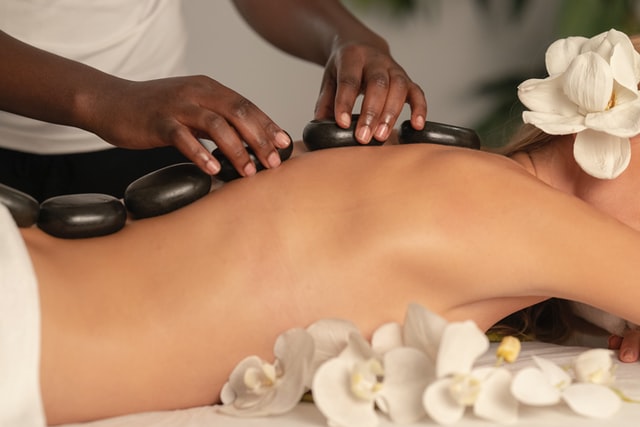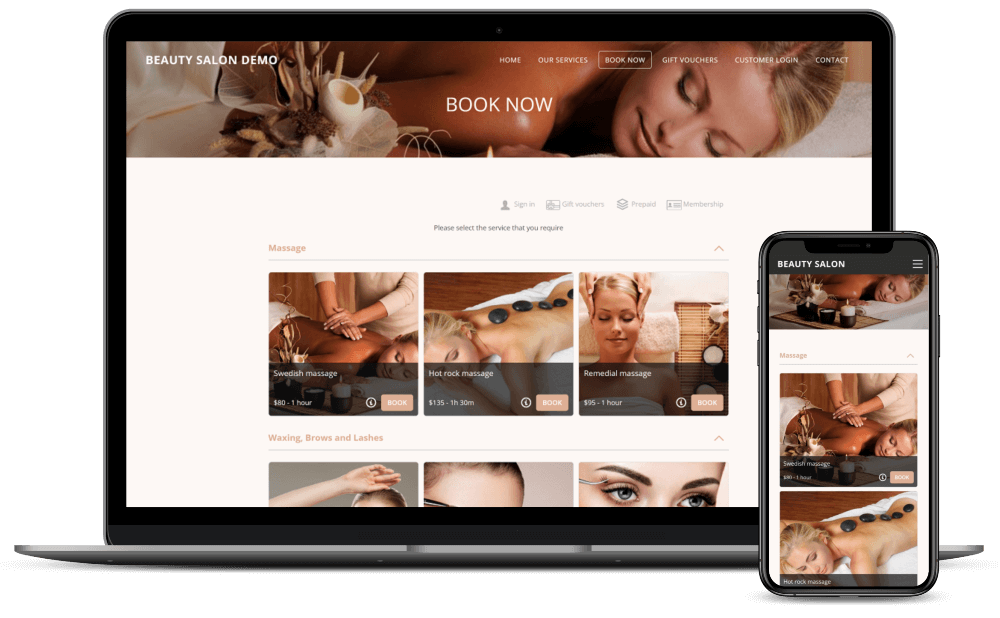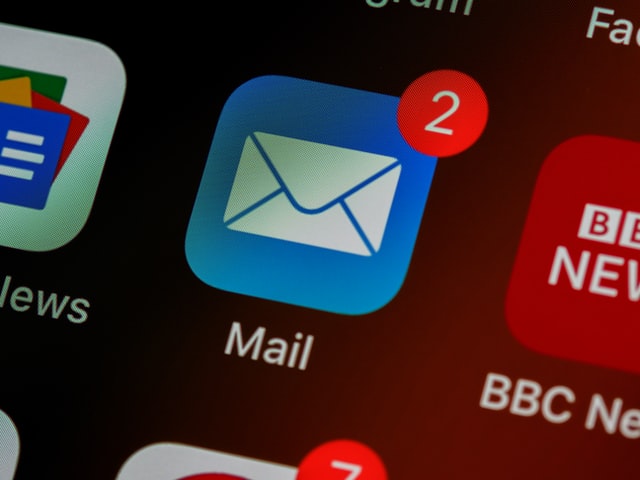
Massage Business Marketing Ideas: 7 Tips to Get and Retain Clients
Thinking of starting your own massage therapy business but don’t know how to get and retain clients? Or probably you’ve already got an established massage business but are looking for new ways to grow it.
You’ve come to the right place.
As we know, marketing a massage business can be challenging. Just because you’ve built the perfect massage clinic at the perfect location, doesn’t mean you’ll automatically get clients as soon as you’ve set up this clinic.
Not to mention, retaining clients is another challenge. Maintaining a healthy customer retention rate can be more profitable than acquiring new customers, and yet, keeping existing customers happy so they keep coming back can be a serious issue.
With that being said, in this guide, we’ll discuss actionable marketing ideas you can use for your massage business, including top tips you can use to get and retain clients.
By the end of this guide, you’d have learned about:
- Important principles to know for marketing a massage business
- How to perform market research and competitive analysis
- Key areas to focus on when planning massage business marketing strategy
- Actionable tips you can use to market your massage business
And more.
Let us begin from the basics.
Massage Business Marketing: Key Principles
While there are many different marketing principles available today with various different interpretations, they are all based on the classic 7Ps of marketing: product, price, place, promotion, people, process, and physical evidence.
Here is how the 7Ps are implemented in a massage business:
1. Product
In the case of a massage business, this refers to the massage services you are offering (as well as items you are also selling).

The first and arguably the most important principle in marketing your massage business is to make sure the products and services you are offering can address the expectations, wants, and needs of your prospective clients.
If you don’t have a strong enough product or service that is perceived as valuable by your clients, no amount of marketing effort can help. So, having a strong product/service lineup should be the foundation of your whole marketing strategy.
2. Price
Even if your service and product are already relevant and valuable, clients won’t purchase it if it’s still too expensive for them (as compared to the service’s perceived value). However, pricing your services too low, and you may risk your business’s profitability.
So, it’s crucial to plan your pricing strategy carefully so you can find the sweet spot.
3. Place
You can set up your massage business in three different types: traditional (where you set up a massage clinic), mobile (in which you are the one visiting your client), and home-based.
Regardless of your business model, it’s crucial to make sure your prospective clients can reach your business easily and/or you can deliver your product/service to your clients in an optimal way. A key aspect of your marketing strategy should be about optimizing how your offering is delivered and sold to your clients.
4. Promotion
Quite often the main focus of many people when discussing “marketing”.
Promotion here refers to how you promote the massage business and will encompass tactics and strategies like advertising campaigns, hosting an event, sales promotion strategies, social media promotions, and other techniques you can use to attract prospective clients and to get your services and products in front of your clients.
5. People
“People” here refers to how your clients connect with real humans on your team as they interact with your business.

Specific to a massage business, this can refer to how your massage therapist interacts with your clients, how your receptionists (if any) facilitate the reservation process, and so on. Human interactions will ultimately contribute to your client’s overall experience.
6. Process
Refers to how streamlined and smooth you deliver your massage services (or related products) to your clients from your start to finish. The whole marketing process begins from when a prospective client first discovers your brand to where they finally receive their service (or product).
Often overlooked, but optimizing the whole client experience from start to finish is actually a crucial aspect of any massage business marketing strategy. Consider different aspects of the business process: how are client service inquiries answered? How are orders fulfilled? And so on.
Document different processes, for example in the form of instruction manuals and official guidelines to ensure all your processes are consistent and optimal.
7. Physical Evidence
A massage business is mainly a service-based business, so delivering physical evidence might not be as straightforward as when you sell physical products.

However, we should also focus on optimizing the physical indicators of your massage business’s service offerings and overall branding: a well-designed and functional website, your massage clinic’s interior design and decoration, business cards, brochures, and so on.
Make sure all physical elements of your business:
- Align well with your business’s overall brand image and marketing campaigns
- Contributes to the overall client experience by catering to their needs and goals
- Making sure client expectations are met, and that the promises made during the sales/promotion process are matched
Massage Business: Market Research and Competitive Analysis
To ensure success, marketing efforts must be directed to the right audience.
Many businesses make the mistake of targeting less-than-ideal audiences, or worse, targeting audiences that are not significant/large enough in quantities, or worse, targeting a market that doesn’t really exist.
This is why performing thorough market research is crucial before you start developing a marketing plan for your massage business.
The market research should focus on answering three key questions surrounding your business:
- Is there a viable market with sufficient size for your massage business?
- What is your ideal audience like? (gather as much information as you can about this target audience: behavior, needs, wants, demographics data, social media/online activities, and more)
- Who are your direct and indirect competitors? How can you win against them?
For the best results, you can get professional help to determine the feasibility of your business. However, you can also perform basic market research by yourself, for example by doing a quick Google search for queries like “massage therapy near me” or similar ones.

The results of this search will show your potential competitors in the area, and then you can research these massage businesses further. If necessary, visit and try their services one by one and assess things like how busy they are at different times of the day, how they promote their services, their target clients (which can help in also understanding your ideal audience), and more.
Identifying Your Target Audience
To be effective, your marketing efforts should be targeted to the right audience.
The best approach to do this is to develop a buyer persona, a semi-fictional model of your ideal client where you should list the following details:
- Their demographics data (age, gender, location, and so on)
- What they do at the moment and their day-to-day activities
- The type of content and/or information they prefer
- Important considerations your clients may have when choosing a massage service and/or massage therapist
- Potential obstacles they may have so they won’t choose your massage business
Your buyer persona should be as detailed, comprehensive, and accurate as possible. Remember that the better you understand your target audience, the better you can plan your marketing strategy.
Also, remember that this buyer persona shouldn’t be a static, one-off thing. Evaluate and update this buyer persona as needed. Your clients’ behaviors will also evolve according to shifts in trends and other factors, and your buyer persona should be regularly updated to reflect these changes.
Massage Business Marketing: Top Tips To Get and Retain Clients
Now that you’ve performed thorough market research and developed a buyer persona for your massage business, here are some actionable marketing tips you can use to get and retain clients for your massage business:
1. Service excellence as your foundation
Your massage business is, in essence, a service-based business.
Before planning and executing your marketing strategy, it’s important to remember that the foundation of your successful marketing should be your service quality, and there’s no shortcut around it.
No matter how much money and time you put into your marketing efforts, they won’t be effective if your service quality is unsatisfactory. Make sure to always provide service excellence so you can establish your business’s position as the best possible solution for their current problem: neck pain, back pain, and so on.
Maintaining service excellence will be especially important in retaining clients. Also, happy, satisfied clients may recommend your service to their friends, peers, and family members. Customer advocacy is key in ensuring sustainable growth for your massage business.
2. Strengthen your online presence
In today’s digital information age, especially in this post-COVID world, it’s very important to establish a strong online presence with a positive online reputation.
People now learn about new local businesses (including massage businesses) online, especially via search engines (i.e. Google) and social media.
This is why your massage business’s online presence is crucial in ensuring its success, and we should focus on establishing a strong online presence in four main areas: website, social media, Google Maps SEO, and online reservation function.
A professional and functional website
A well-designed and functional website can act as your business’s digital business card and storefront. Your potential clients will check your website: an attractive and informative website may encourage its visitors to book your massage service, and vice versa, a prospective client may be discouraged if your website is obsolete with thin content.
Today, setting up a well-designed website is fairly easy with platforms like Wix, Squarespace, or even WordPress, and gone are the days when you’ll need to hire an expensive website developer before you can have a professionally-designed website.

Meaning, there’s simply no excuse not to have a professionally-designed and functional website for your massage business. Make sure your website is mobile-friendly and loads fast, and is integrated with online reservation functionality (more on this later).
Social media presence
It’s no secret that most of your prospective clients will be active on social media, so it’s quite obvious that you should market your business on relevant social media platforms.
Instagram and Facebook should be your primary focuses in promoting your massage business, but you can also diversify your efforts on Twitter, LinkedIn, and even YouTube, depending on your target clients.

The question is, with all the noises on social media, how can you get your business noticed?
Creativity is key, but you should also try to find the right balance between organic efforts (building your own followers and posting your content) and paid efforts (paid advertising, influencer marketing, etc.)
Organic efforts are affordable and even free when done right, but will take some time before you can generate results. Paid options, on the other hand, can guarantee quick results, but can be very expensive if you aren’t careful.
Being creative while finding the sweet spot between paid and organic efforts is key.
Online reservation functionality
In this post-COVID world, people simply expect a reliable and fast online booking experience. Also, consider the fact that 40% of bookings nowadays actually happen outside business hours.
Integrating online, 24/7 online reservation is simply a must, and a phone-based and the email-based appointment-taking process is simply no longer sufficient.

Make sure it’s as easy as possible for your clients to book your massage therapy sessions, and this is why you should integrate a reliable online appointment software into your website.
Local (Google Maps) SEO
More and more prospective clients nowadays learn about local businesses via Google search for queries like “massage clinic near me”, “massage therapy in New Orleans”, and so on.
What we need to know is that for these queries, Google will prioritize results from Google Maps and will place them on top of the organic results. This is why it’s important for massage businesses to ensure their businesses are listed on the Google Maps’ top results for the area, which we can achieve via local SEO or Google Maps SEO.
Although local SEO might seem daunting at first, actually we can perform it in just four simple steps:
- Claiming and verifying Google Maps/Google My Business listing
- Optimizing your Google My Business Listing. Focus on providing accurate and complete information for your users.
- Building local citations by listing your massage business on relevant online directories
- Getting more reviews from existing clients, especially on Google Maps but also on relevant review sites/platforms
Do these four steps consistently, and your massage business’s listing will slowly but surely climb the Google Maps ranking.
3. Establish strong branding
It’s crucial to build a recognizable and credible brand as a foundation of your whole marketing strategy.
Strong branding is crucial to ensure your potential clients know where you are at, the services you provide, and why they should choose your service instead of your competitors.
While establishing a strong branding can be a pretty deep subject on its own, here are some actionable tips you can try to build a strong brand for your massage business:
- Make sure to choose a brand name that is easy to pronounce and remember and aligns with your company’s value
- The better you understand your audience, the better you can establish a brand that caters to them. Refer back to your buyer persona and identify how to build a brand that will appeal to this audience.
- Maintain brand consistency throughout all your marketing efforts: website, social media handles, interior design, decoration, and so on. A very important factor in establishing a strong and memorable brand is to be consistent.
4. Produce high-quality visual assets
In today’s highly visual social media age, you definitely need high-quality photos and videos to get your massage business in front of your target clients.
If necessary, hire a professional photographer and/or videographer to develop high-quality visual assets for your massage business so you can upload these high-quality photos and videos on your website and social media. You should also include well-taken photos on your printed marketing materials like brochures and posters. Make sure to use a poster maker to create visually compelling and eye-catchy posters that grab your prospects’ attention.
Creatively use videos to showcase and promote your services, for example on platforms like YouTube, Instagram, and Facebook, as well as on your email newsletter.

For instance, you can share a professionally-made video demonstration of your massage services or testimonials from satisfied clients. This type of content can be very effective in promoting your massage business, so consider reaching out to high-profile clients or influencers for this purpose. You can, for example, offer a free massage or other incentives while you get valuable video content showcasing your service.
5. Establish a strong customer loyalty program
As discussed, in growing your massage business, retaining existing clients can be just as, if not even more important, than acquiring new ones.
Repeat business is very important in ensuring your massage business stays profitable, so you’ll need a clear strategy on how to manage retention.
Here are a few tips:
- Create a loyalty program
Everyone loves being recognized and everyone loves exclusive perks. Create a comprehensive loyalty program so you can offer exclusive loyalty discounts and other special promotions to encourage repeat businesses.
- Email marketing
If you’ve already implemented an appropriate online reservation system, then the system should automatically collect your clients’ contact information, especially their email addresses.

Promoting your business via email remains very effective with very high ROI, especially when it comes to retaining clients. You can, for example, send an email to clients who haven’t booked your service in more than a month and offer a special discount. You can also greet them on their birthdays and offer special discounts, and so on. You can also use these emails to send useful general information (health and wellness tips, stretching exercises, etc.)
6. Building social proofs
Social proofs are a very valuable asset in today’s digital age, and one of your core marketing strategies should be to encourage advocacy and referrals from your satisfied clients.
You should:
- Solicit positive reviews
Online reviews are today’s equivalent of word-of-mouth marketing. More than 95% of customers read online reviews when comparing different businesses, including massage services.
Make sure they can easily find positive reviews of your massage therapy business, and while the best way to do this is to consistently deliver high-quality services, you can use tactics like offering incentives to encourage your existing clients to leave their reviews.
For example, you can offer a 10% discount on their next visit if they can show their Google Maps review for your business.
- Starting referral campaigns
You can start simple, for instance by offering a group discount promotion to encourage your clients to bring their spouse, friends, or family members.
To encourage growth, you can also run a referral campaign: offering commissions to existing clients for new clients who come to your massage business and mention the client’s name (or referral code).
7. Partner up with local businesses
Even in this digital age, you should still partner up with local non-competing businesses in your area and build a community.
You can build relationships and potentially partner up with local businesses that offer similar services and share similar values, such as:
- Gyms
- Spa centers
- Hairdressers/stylists
- Makeup artists
- Dietitians and nutritionist
- Holistic medicine practitioners
Also worth noting is that businesses like gyms with large venues may be looking for massage therapists to diversify their services, so you can probably partner up with them and rent out a room to expand your clinic.
These businesses may share the same clientele as yours, so you can partner up and offer cross-promotion discounts. For example, you can offer a 20% discount for those who have visited a local hairdresser, while this hairdresser will also offer the same discount for your clients.
Also, don’t underestimate the importance of connecting with your local community and building meaningful relationships. For example, you can try to be involved in the local massage therapy associations in your area, the chamber of commerce, and so on. Being active in these local communities can also open up new opportunities to connect with potential clients and partners.
Wrapping Up
Above, we have discussed the key principles and best practices in marketing your massage business, as well as 7 powerful tips you can use to get and retain clients.
There are various tactics and strategies you can use to transform the way your massage business gets clients, but above anything else, marketing is about knowing your target audience’s needs and wants, and whether you can provide valuable solutions for these needs.
The better you understand your target clients, the better you can shape your massage business and grow your clientele.


